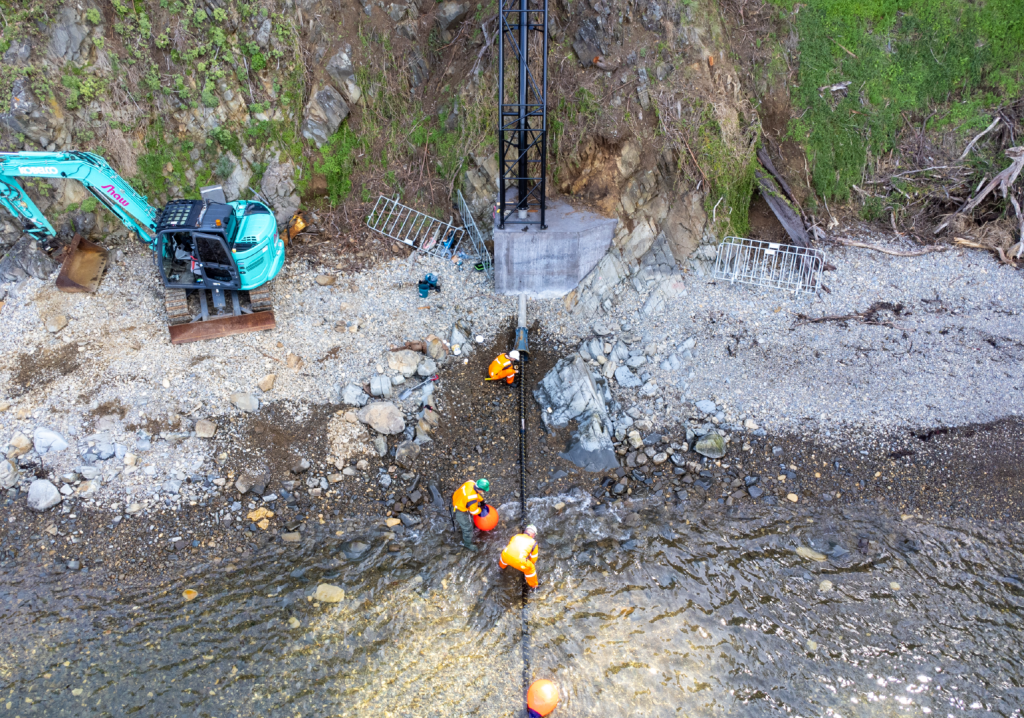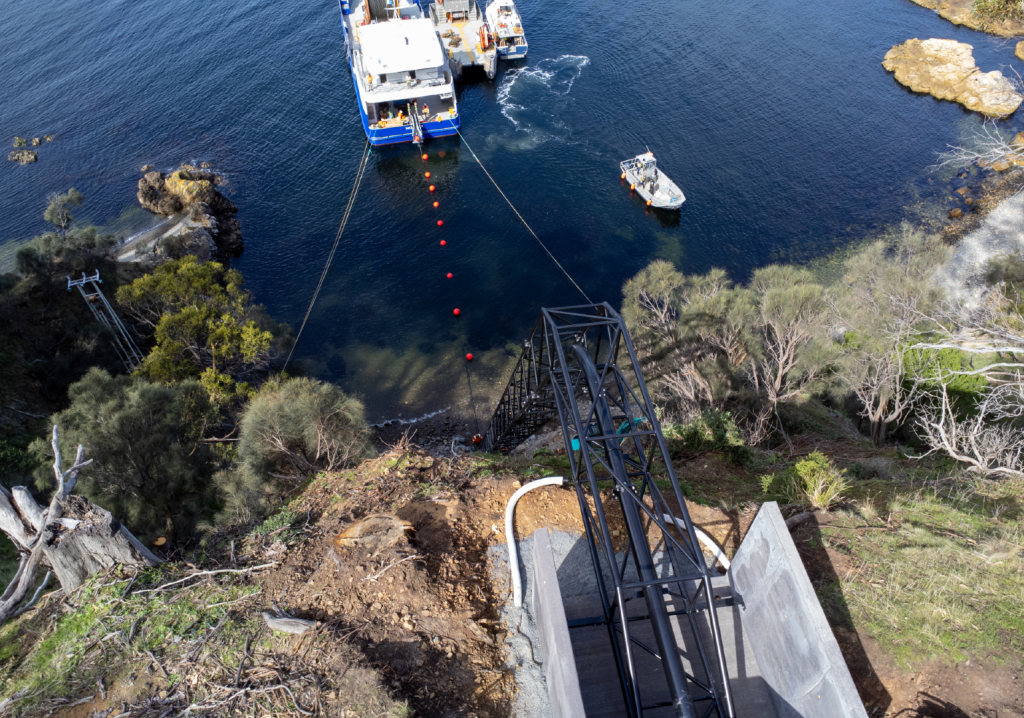When a tiny Tasmanian Island was left without a stable source of power, a team of engineers overcame obstacles to replace the underground cable while conserving the abundant marine life.
Back in 2019, Tasmania’s Bruny Island lost its power supply. Bruny is essentially two islands known as North and South Bruny, separated by a thin sandy strip of land, with each receiving power from a separate underwater cable.
When TasNetworks detected a fault in the northern cable, divers deployed to identify the problem discovered that an anchor had cut straight through it — damaging the power source beyond repair.
As a result, both regions were forced to rely on the southern cable. But during peak electricity season in summer, the single cable wasn’t enough to supply all of Bruny Island, so back-up diesel generators deployed by TasNetworks were used instead.
For an island known for its pristine waters and landscape, relying on a diesel energy source was not a sustainable long-term solution. So in 2022, Shaw Contracting was commissioned to take on the Bruny Island Submarine Cable Replacement project, which is nominated for a 2023 Engineers Australia Excellence Award.
Project Engineer Marcela Bezerra explained to create how keen problem solving prevailed when challenges were posed by the tricky terrain.
Changing tack
Replacing Bruny Island’s northern cable was a design and construct project, intended to prepare the region for the future.
“The new cable is bigger, taking into account the population growth, so it can feed the island with more energy when required,” Bezerra said. “It’s also [combined] with a fibre-optic cable, with the design aiming for a maintenance-free service life of over 40 years.”
To replace the northern cable, a connection needed to be established with existing TasNetwork infrastructure along an 85-metre underground stretch from Tinderbox across the D’Entrecasteaux Channel to Dennes Point on Bruny Island. But the rugged coastline proved difficult to work with.
“We had to go through a 50-metre cliff at Tinderbox down to the channel, then to Dennes Point at the beach,” Bezerra said.
In the initial design at the Tinderbox cliff face, the team proposed using horizontal directional drilling – starting at the top of the cliff and coming out at the bottom at the beach.
“After some geotechnical investigations we found that ground conditions made this unfeasible,” she said.
To overcome this issue, a trussed cable duct system was designed and installed from the top to the bottom of the cliff.
The truss structure has a lower and top abutment to anchor it in place, which created another problem for the team.
“The bottom of the cliff on Tinderbox Beach is only accessible via crane or boat – it doesn’t have a connection to the land itself,” Bezerra said. “So we access it every single day in a man box with a crane.”
Pouring concrete at the bottom of the structure also required use of a crane and crane bucket. But laying concrete 50 metres above ground at the top of the cliff came with significant falls risks.
“We therefore decided to do a precast instead of in situ, then put it in place with the crane,” Bezerra explained.

Loading and laying with care
When it was time to lay the cable, a marine survey in the area where the loadout facility was located discovered the water wasn’t deep enough to allow for an approaching boat to pick up the cable.
A plan that was six months in the making had to be reconfigured within five weeks, including making last-minute changes to the load out facility and vessel.
“We had to load the cable at the northern end of Tasmania. This meant the boat we had lined up was not suitable because it would have needed to travel through [rough] Bass Strait waters.”
Nevertheless, the cable was loaded at Bell Bay and brought by vessel all the way to Tinderbox Beach.
“We connected the cable to a truck on the top of the cliff and it was mounted with a winch, pulled through the cable duct on the truss structure,” Bezerra said.
But laying and pulling a cable across the sea floor is no mean feat.
“Once you’ve damaged the cable, you either have to start from the beginning or join it, which is not ideal,” she said.
The team ensured a high level of care was used when laying the cable with the boat across the channel. This included constant checks of the angle in which the cable was laid from the boat to the water.
“It couldn’t be too slow, otherwise it would bend the cable. And couldn’t be too fast because it could stretch the cable and damage it,” Bezerra added.
Prioritising the environment
Several environmental measures were deployed throughout the project to protect local marine life and preserve heritage sites.
With a marine reserve at Tinderbox, the team had to adhere to higher standards than the regular safety and environmental procedures already in place.
“We had to rethink the trenching at Tinderbox Beach, because it would cause too much disturbance to the marine environment,” Bezerra said. “So we made the trench shorter and narrower.”
The trenching width in the Tinderbox marine reserve was strategically limited to no more than 10m from the trench’s centre, preserving the surrounding marine environment.
Daily checks of the on-site equipment ensured no wildlife or nests were present on the land-based equipment before it was used.
Additional signage also had to be installed at Dennes Point, where the anchor that damaged the old cable was found, to warn boaters about the new submarine cable’s location.
However, because that location is an Aboriginal heritage area, the team opted not to track the excavator needed to install the sign underground.
“Instead we used a barge to bring the excavator into place, so we weren’t tracking [through land] as much,” she said. “We also used a precast base that was on land so we didn’t have to do any excavations.”
Benefits to the community
Despite these challenges, the team’s quick thinking and innovative mindset ensured the project pulled through on time and under budget.
“We laid the cable in early September 2022 and by the end of the month, it was all connected,” Bezerra said.
Now, Bruny Island inhabitants have both a reliable source of power and faster internet.
“There was no harm to the environment or personnel during the project,” she said. “Everybody [prioritised] the care of the location we were working in, and realised that it was a very loved area by the local community.”
The winning projects and engineers will now compete as finalists in the national Excellence Awards, which are to be announced in Melbourne on 29 November. Register for the Gala event here.
